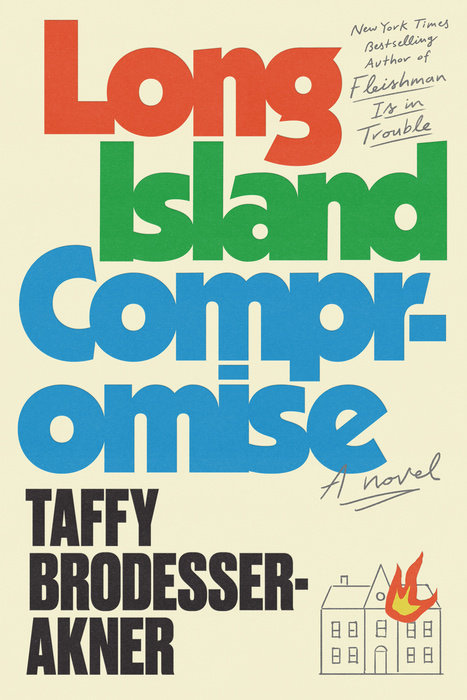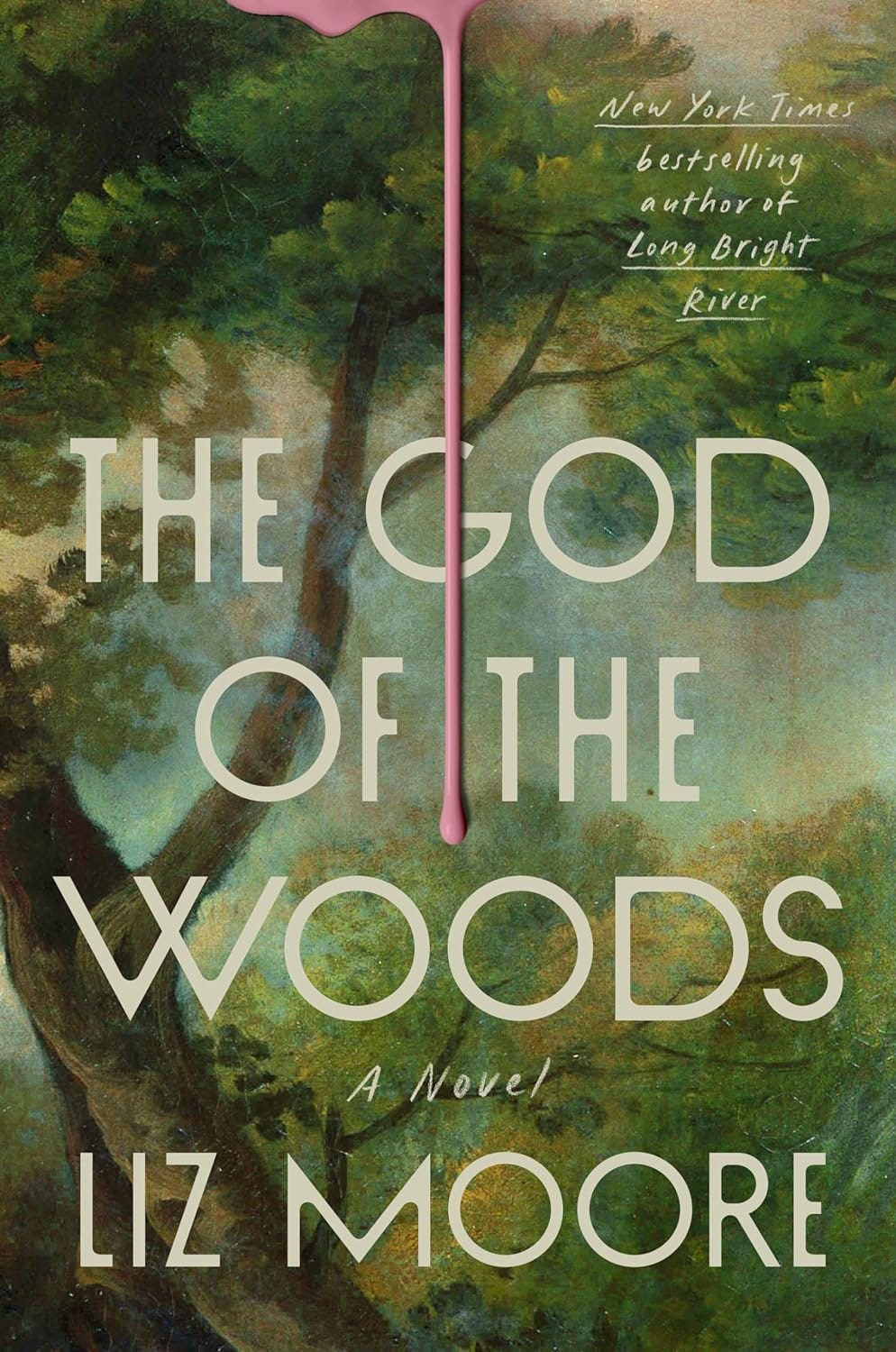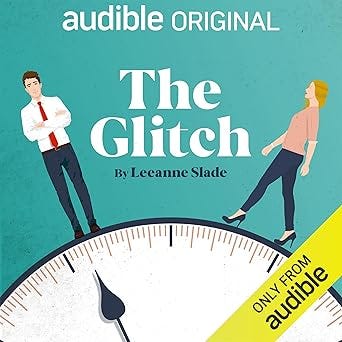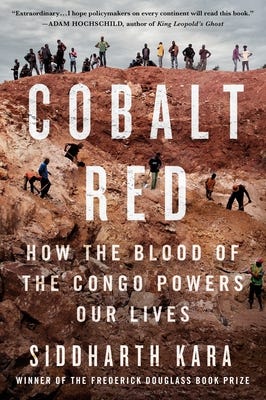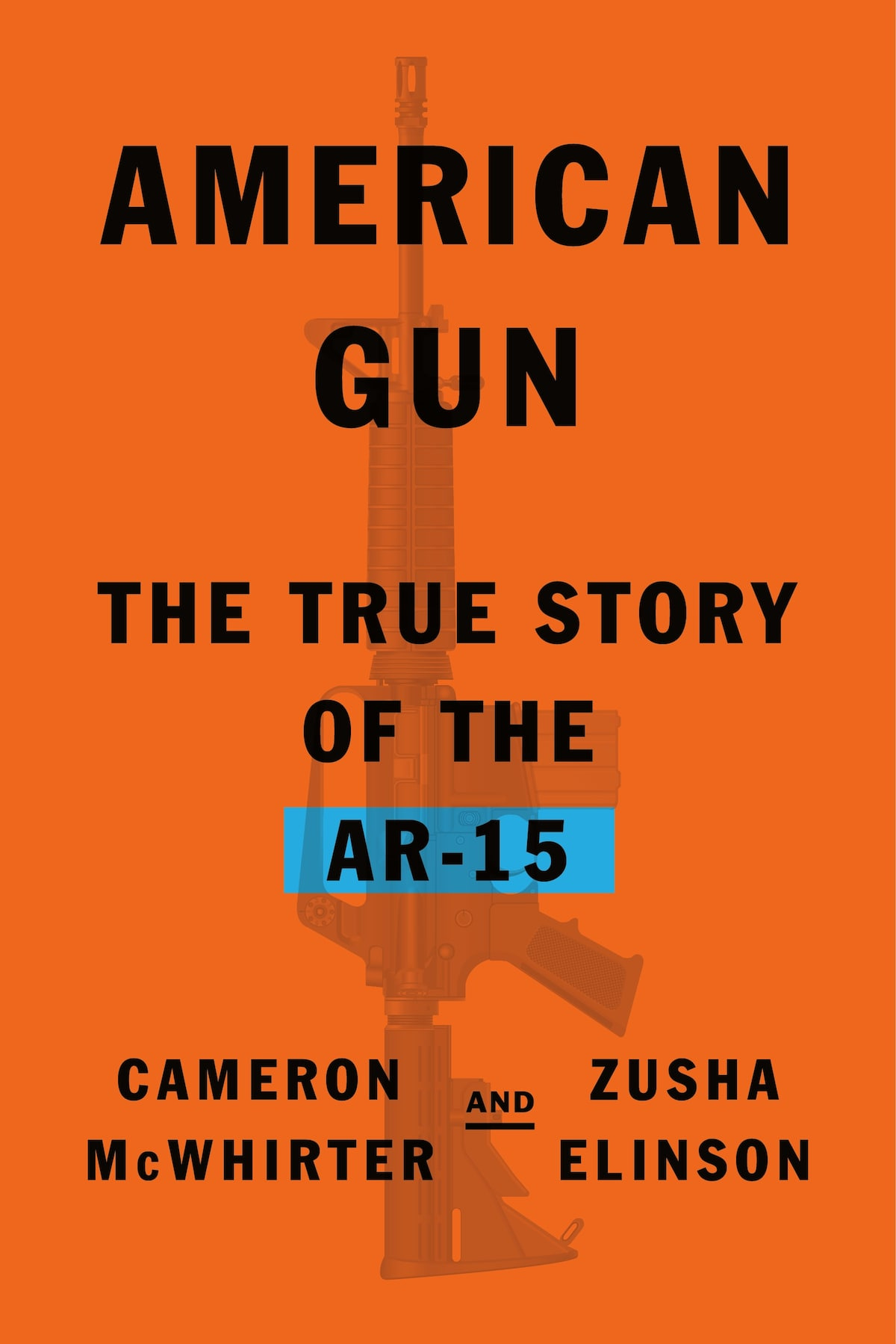what I read last week
ripe, long island compromise, the god of the woods, the glitch, clytemnestra, cobalt red, american gun
We’re in the last stretch of summer, so I’m trying to finish up some summer reads that have been on my TBR list. This week was all over the place genre-wise — I finished some lit fic books, some fun summer beach reads, and two nonfiction books covering heavier topics.
Ripe by Sarah Rose Etter
Ripe is set in San Francisco in 2020 and follows 33-year-old Cassie, a millennial working in marketing at a big Silicon Valley company called VOYAGER (“a unicorn start-up valued at $16 billion for its opaque use of data to target users, driving them to make purchases online”).
Cassie toggles between her “fake self,” who excels at her job, and her “real self,” who snorts a line of cocaine every morning before work, has no disposable income, and is crushed by her soulless and toxic job. Etter gives Cassie anxiety/depression a physical form — a black hole that constantly changes size to reflect her moods and has followed her around her entire life. The black hole is like an imaginary friend she’s had since childhood — menacing but kind of cute and friendly. Cassie struggles personally as the world turns increasingly apocalyptic (wildfire smoke blankets the skies; the pandemic spreads across the globe).
I am obsessed with the subgenre of depressed women lit fic (in the vein of Joan Didion, Virginia Woolf, and Sylvia Plath), and Ripe did not disappoint. It’s a surreal and unhinged story of a millennial tired of girlbossing. I also lived in San Francisco in 2020; reading about it in Ripe was eerie (I took the creepy orange sky picture at the beginning of this roundup). I can’t stop thinking about this book and want all of my friends to read it.
My Rating: 3.9/5
Genres: Literary Fiction (Messy Women; Dark)
Movie/TV Pairings: Fleabag; Everything Everywhere All at Once
Food Pairing: Pomegranates
Long Island Compromise by Taffy Brodesser-Akner
I read Long Island Compromise for my book club. I enjoyed Brodesser-Akner’s previous book, Fleishman Is in Trouble (that was turned into an FX show). Set in Long Island and LA, Long Island Compromise is a tragicomic family novel about an “extraordinarily, absurdly, kidnappably rich” Jewish family. It opens with the kidnapping of the heir to a Styrofoam fortune (Carl Fletcher) in 1980 and then follows the lives of the adult Fletcher children (Beamer, Nathan, and Jenny).
Brodesser-Akner excels at cultural observations (I loved how she describes the country clubs of Long Island and “LA face”). The themes about wealth and inherited trauma were well done.
Overall, I rated this book something between 3 and 4 stars. I recently read The Bee Sting (which is my all-time favorite tragicomic family novel), so that might have messed with my expectations here. I enjoyed Long Island Compromise, but the characters were a little flat. This book review in The Guardian put it well:
This set up, of course, owes much to the TV drama Succession (which is consciously referenced in a subplot): adult siblings messed up by their parents’ extraordinary wealth, their inner lives locked on self-destruct, a vacuum where parental love and attention should be. Succession works because even though everyone in it is horrendous, there is tremendous character nuance and development, and so we come, despite ourselves, to care deeply. The sibling relationships, particularly, offer changing, multi-dimensional perspectives which generate pity and compassion.
This does not happen so readily in Long Island Compromise, where characters are largely disconnected, their inner development arrested. Beamer starts the novel doing awful things and does them repeatedly. All the people in his life are selfish and spoilt; and anyway, he is so disconnected from them they can’t shed light on his pain. Consequently, his vulnerability, while obvious, doesn’t quite land, emotionally. Nathan, similarly, begins and ends the novel weak and anxious, while Jenny is grim and hard‑nosed throughout. They are, essentially, awful, sad people.
My Rating: 3.8/5
Genres: Contemporary Fiction - Tragicomic Family Saga
Audio: I listened to the first section on audio — the narrator is great (15 hr 23 min)!
Movie/TV Pairings: Fleishman Is in Trouble; Succession
The God of the Woods by Liz Moore
The God of the Woods takes place at a summer camp in the Adirondacks in upstate New York. In August 1975, the camp counselors discover that Barbara Van Laar, the thirteen-year-old daughter of the family that owns Camp Emerson, is not in her bunk. It’s not the first time a Van Laar child has vanished in the woods. Fourteen years earlier, her brother, Bear Van Laar, went missing. (Barbara was conceived after the death of her brother.)
This book is a quiet mystery thriller with a non-linear timeline — Moore alternates between the two periods surrounding the two Van Laar disappearances: 1950’s-1961 and 1975. The plot slowly unfolds through multiple points of view.
Overall, I really enjoyed The God of the Woods, but I had some issues with it. I was expecting a bit more — I saw some reviews compare this to the immensely popular The Secret History by Donna Tartt. I’m not sure if The God of the Woods lives up to that level of hype (I never struggled to put this down while I was reading it). Moore also left several narrative threads and red herrings unresolved. These abandoned plot lines made me think there might have been too many perspectives — I counted 7.
But these critiques are relatively minor. The God of the Woods is definitely more than just a “missing child” book — Moore’s fictional camp and characters feel very real. She deftly explores themes of class tension and complex parent-child relationships.
My Rating: 3.9/5
Genres: Historical Fiction; Mystery/Thriller
Audio: This book works on audio as long as you pay attention to the year each chapter is in (14 hr 35 min).
The Glitch by Leeanne Slade
I randomly saw a clip on TikTok of the author of The Glitch announcing the narrators for her new book: Daisy Edgar-Jones (from Normal People) and Sam Claflin (from Me Before You and Daisy Jones & The Six) (!). I immediately downloaded it. It is free with an Audible membership, which feels outrageous — honestly, I would pay extra to hear these narrators.
The Glitch is set in London and follows Grace Monroe (a chef) and Henry Dunne (a cardiac nurse). Grace is about to turn thirty and is struggling (her restaurant is bankrupt; her grandmother is in the hospital; she’s sobbing). She has a bottle of wine, wishes on some crystals, and wakes up five years in the past.
It’s been a while since I’ve listened to a romance audiobook, and I loved this one. It might not be perfect, but Daisy Edgar-Jones and Sam Claflin were 10/10 narrators. This story reminded me (in a great way) of The Seven Year Slip and The Dead Romantics by Ashley Poston. The Glitch is worth a listen if you’re craving a rom-com.
My Rating: 3.1/5
Genres: Contemporary Fiction - Romance
Audio: 11 hr 36 min.
Movie/TV Pairings: 13 Going on 30; Sliding Doors
Clytemnestra by Costanza Casati
Clytemnestra is a retelling of the House of Atreus family. The book follows Clytemnestra through her childhood as Princess of Sparta (she’s Helen’s sister), her marriage to her first husband, the tragedy that leads to her marriage to Agamemnon, and her life as a wife and mother to his children.
Like Circe, Clytemnestra is not a particularly sympathetic character in Greek myths and literature — she is the murderous and vengeful queen who stood by as Agamemnon sacrificed their daughter before going to fight in Troy. Casati gives us a more nuanced portrayal of a complex woman. Clytemnestra was raised as a Spartan warrior and was forced into marriage to the tyrannical Agamemnon. I highly recommend this book if you want something similar to Circe!
My Rating: 3.9/5
Genres: Fiction (Myth Retelling)
Audio: Good British narrator (14 hr 55 min)
Cobalt Red: How the Blood of the Congo Powers Our Lives by Siddharth Kara
In Cobalt Red, Siddarth Kara discusses the toll of cobalt mining on the people of the Congo. Cobalt is needed to increase the density of the cathode in lithium-ion batteries — it is what holds the charge. 75% of the world’s cobalt is mined in the DRC, and all of these mines are foreign-owned (by Chinese, Swiss, US, and Canadian companies). The cobalt reserves are relatively shallow in the DRC, because they sit on the shoulder of the East African Rift (a 6500 km fracture in the earth’s surface that stretches from Jordan to Mozambique caused by three plates pulling apart). Cobalt mining is hazardous; thousands of Congolese (many of them children) work as “artisanal miners” (a term that sounds innocuous but means dangerous subsistence labor that earns workers 1-2 dollars per day).
I put Cobalt Red on my reading list after reading several positive reviews. I am glad that Kara drew attention to this issue and industry, but unfortunately, I was disappointed with the writing style. I found myself comparing this to Chip War (a history of the silicon chip) and The Lumumba Plot (about the assassination of Patrice Lumumba, which I’m currently reading).
I thought Cobalt Red was repetitive and lacked a cohesive narrative. It read like a mix between a book report, a travelogue, and a Wikipedia article on cobalt. In the introduction, he promises to include “firsthand accounts of the children, women, and men who dig for cobalt, as well as my own reporting on the mineral traders, government officials, multinational corporations, and other stakeholders that profit from their work.” I didn’t really get that from his writing. There is no characterization of the Congolese people.
Rating: 3/5
Genres: Nonfiction - History (Resource)
American Gun: The True Story of the AR-15 by Cameron Mcwhirter and Zusha Elinson
I also finished reading American Gun: The True Story of the AR-15 this week. The first half of this book covers the history and development of this ubiquitous and infamous gun. While I initially assumed “AR” stood for “assault rifle,” the name is descriptive — it was the fifteenth weapon developed by the company ArmaLite. It’s the civilian version of the military’s M16. The AR-15/M16 was developed by Eugene Stoner in 1950s California and was adopted by the US armed forces in the Cold War when it was clear that the heavy M1 (a precision weapon used in WWII) would not do.
The term “assault rifle” was popularized in the late 1980s by lawmakers seeking to enact gun regulation. The term originally comes from WWII and refers to the Nazi rifle Sturmegwehr (“storm rifle”), which the US Military Intelligence Service translated as “assault rifle.” The Nazi rifle was designed to be lighter than the traditional military rifle and fire rapidly. This gun affected Russian and American gun designers and inspired the AK-47 (designed by Mihail Kalashnikov) and AR-15/M16.
The AR-15 is semiautomatic. An automatic rifle allows a shooter to fire a stream of bullets by holding down the trigger; semiautomatic allows the shooter to fire one shot per trigger pull (the gun automatically loads the next round by using the energy from the previous shot). The main difference between the AR-15 and M16 is the M16 is “select fire” (basically, soldiers can fire on automatic or semiautomatic with the flip of a switch).
The second half of this book focuses more on the recent shootings and politics around the AR-15 and gun control more broadly. I found this half to be less interesting. The commentary around shootings and gun control was lacking, and the book lost momentum. I understand why the authors included the descriptions of shootings (it shows the human cost of this weapon), but I would have appreciated more nuance and insight here. Nevertheless, this was a good read.
Rating: 3.6/5
Genres: Nonfiction - History/Current Events (Weapons)
Articles I can’t stop thinking about:
“The Millenial Vernacular of Fat Phobia” by Anne Helen Petersen. “Why does it feel so revelatory and familiar and deeply sad to hear Taylor Swift talk about the gray area of disordered eating?”
Pablo Escobar’s hippos are wild in Colombia.
Oasis is (maybe) getting back together — “Why do we care so much about Oasis?”
What I’m cooking: I’m cooking from Molly Baz’s More Is More — this halloumi, cucumber, and walnut spoon salad is perfect.







